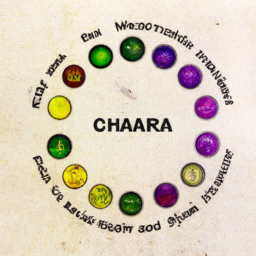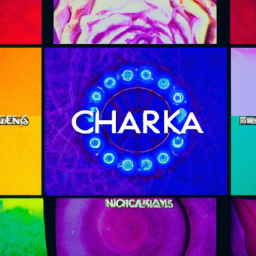?
The human body is a complex and intricate system, composed of various physical, emotional, and spiritual elements. One essential aspect of our being is the chakra system. Chakras are energy centers located in different parts of the body that are believed to be responsible for our physical, emotional, and mental well-being. Each chakra has its unique function and is associated with specific signs and characteristics.
The 7 Chakras
There are seven main chakras in the human body, aligned along the spine, from the base of the spine to the crown of the head. Each chakra is represented by a specific color and symbol and is responsible for a distinct aspect of our well-being. Let’s take a look at the chakra signs and their corresponding traits.
1. Root Chakra (Muladhara)
The root chakra is situated at the base of the spine and is associated with the color red. This chakra is responsible for our sense of stability, security, and survival instincts. When the root chakra is open and balanced, one feels grounded, secure, and connected to the earth. The signs of a blocked root chakra include fear, anxiety, and feelings of instability.
2. Sacral Chakra (Svadhisthana)
Located in the lower abdomen, the sacral chakra is associated with the color orange. This chakra deals with our emotions, creativity, and sensuality. With an open and balanced sacral chakra, one would experience passion, pleasure, and healthy emotional expression. An imbalanced sacral chakra may manifest as emotional instability, lack of creativity, or even sexual dysfunction.
3. Solar Plexus Chakra (Manipura)
The solar plexus chakra is located in the upper abdomen and is represented by the color yellow. This chakra is responsible for our self-esteem, confidence, and personal power. An open and balanced solar plexus chakra enables one to have a strong sense of self-worth, motivation, and assertiveness. On the other hand, a blocked solar plexus chakra may lead to feelings of insecurity, low self-esteem, or even control issues.
4. Heart Chakra (Anahata)
The heart chakra is located in the center of the chest and is associated with the color green. This chakra is responsible for our ability to love, show compassion, and have healthy relationships. When the heart chakra is open and balanced, one feels deeply connected to others, and a sense of unconditional love prevails. An imbalanced heart chakra may manifest as feelings of bitterness, jealousy, or an inability to form healthy relationships.
5. Throat Chakra (Vishuddha)
The throat chakra is situated in the throat area and is represented by the color blue. This chakra deals with communication, self-expression, and speaking one’s truth. With an open and balanced throat chakra, one can effectively communicate their thoughts and feelings and live an authentic life. A blocked throat chakra may lead to issues with communication, feelings of timidity or being misunderstood.
6. Third Eye Chakra (Ajna)
The third eye chakra is located in the center of the forehead and is associated with the color indigo. This chakra is responsible for our intuition, wisdom, and spiritual insight. An open and balanced third eye chakra enables one to have a deeper understanding of themselves and the world around them. When this chakra is blocked, one may experience a lack of clarity, confusion, or difficulty in making decisions.
7. Crown Chakra (Sahasrara)
The crown chakra is located at the top of the head and is represented by the color violet. This chakra is connected to our consciousness, spirituality, and enlightenment. An open and balanced crown chakra enables one to have a connection with a higher power, a sense of purpose, and a deeper understanding of themselves. An imbalanced crown chakra may result in feelings of disconnection, spiritual disinterest, or lack of direction.
In Conclusion
The chakra signs mentioned above are just a few of the many indicators and characteristics associated with each chakra. It is essential to note that having an open and balanced chakra system is crucial for our physical, emotional, and spiritual well-being. Any imbalances or blockages in our chakras can manifest as various physical or emotional issues.
Regularly practicing chakra balancing techniques like meditation, yoga, or energy healing can help keep our chakras open, balanced, and in harmony. By understanding the significance of each chakra and recognizing the signs of imbalance, we can take the necessary steps to maintain our overall well-being and live a more fulfilled life.





Fascinating topic!
JoshuaLopez: I’m looking forward to reading this!
Great post–I’m excited to learn more about the Chakra Signs!